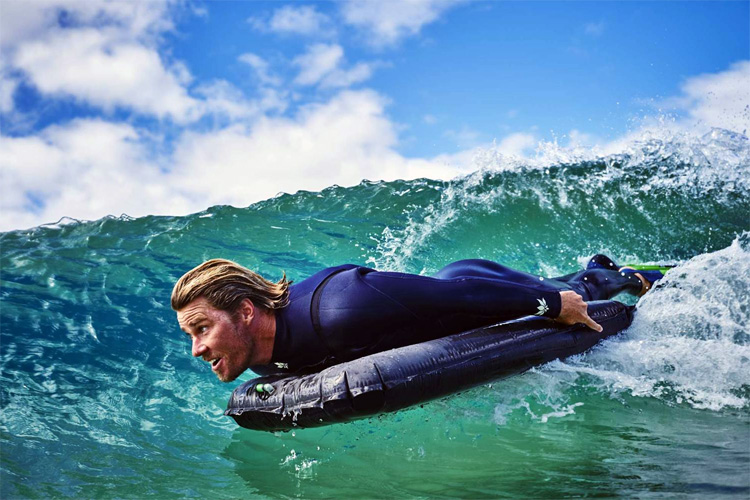It looks like a towel or an inflatable bodyboard, but it lets you ride a wave with your eyes close to the water's surface. The surf mat is a pliable watercraft capable of doing magical things.
A surf mat is a small, soft, inflatable, rectangular rubber mattress used to ride waves in a prone position. Mat surfing allows you to levitate above the surface of the water.
Surf mats might look like boogie boards, but they're built and ridden entirely differently. First, surf mats are not hard/rigid boards - they're inflatables.
Second, just because you're an intermediate bodyboarder doesn't mean you'll transfer your knowledge to mat surfing.
The popularity of surf mats started to soar in the 1960s when young beachgoers used these small inflatable boards to ride the whitewater on summer days.
The surf mat was somehow accessible and easy to play with.
However, the world's first known surf mat - the "surf-o-plane" - had already been invented in 1932 by Ernest Smithers, a physician from Bronte, near Sydney, in Australia.
The molded four-ribbed rubber mat featured a valve in the tail and two handles on the nose. It was 2'7'' in length and 20 inches in width.
On December 14, 1933, the patent request was accepted, and a new watercraft was ready to hit the most crowded beaches in Australia.
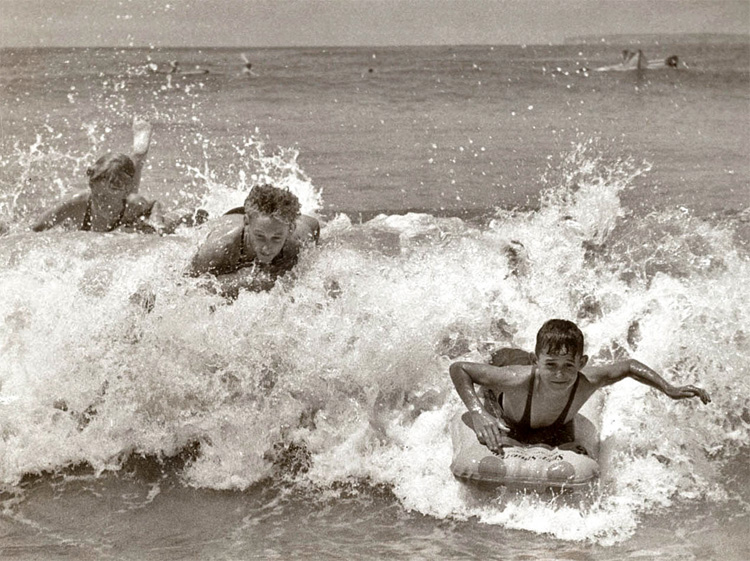
Glory Days
The new toy was a huge success in Bondi Beach. Initially, the company behind surf-o-planes opted to hire out the mattresses, but soon they began selling them.
By 1938, the surf mat already had its own division at the Australian Surfing Titles.
As decades went by, surf mats became increasingly popular, not only in Australia but also in New Zealand, Hawaii, the United States, England, and South Africa.
On the East Coast of the US, the "floats" or "surf rafts" were first seen in Virginia Beach, but the new beach trend soon traveled to Southern California, where they became a summer hit during the 1950s.
The surf mat was an introduction to surfboarding. Pre-teens learned the basics of wave riding on the inflatable toy before graduating to surfing.
In the early 1960s, surf mats were longer than the original Australian crafts, measuring around 4'5''.
The most famous model was the Converse Hodgman, a red, white, and blue beauty that sold for roughly $15. Everybody wanted one.
Steadily over time, mat riding became an obsession.
California surfer-filmmaker George Greenough was one of the personalities that helped propel the surf mat mania throughout the world, especially after his appearance in "Fantasea."
Only Tom Morey's invention - the bodyboard - stopped the inflatable mat revolution.
With the success of the boogie board, mat riders became confined to an underground movement, hidden for a couple of decades.
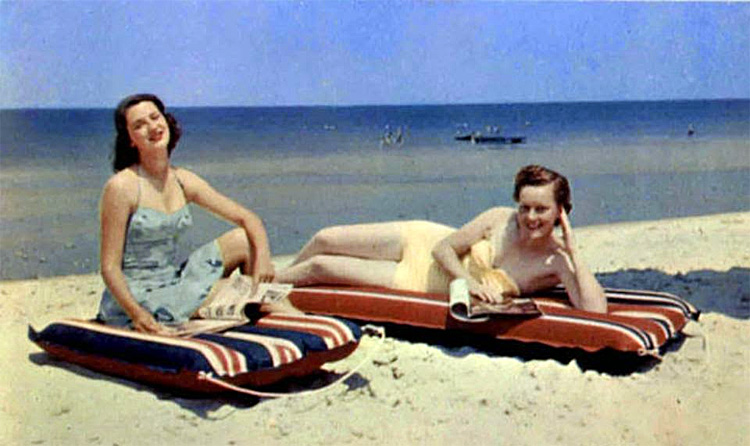
The Rebirth of the Surf Mat
Fortunately, the 21st century brought new hopes for the surf mat, and the watercraft gained new fans as the retro coalition gained traction and rescued old gear like the paipo, the longboard, and other vintage surf vehicles.
Since its creation in the 1930s, there have been no more than a dozen credible surf mat manufacturers.
Advanx, Converse, Merrin, Hodgman, 4th Gear Flyer, G-Mat, Neumatic Surfcraft, and Krypt are some of the brands that developed and still produce high-end inflatable mats.
Mat building nearly became a lost art. But if you're looking for surf mats for sale, it's good to know there are still a handful of trusted manufacturers building classic models.
A modern surf mat is made using glueless welding techniques in lightweight nylon coated with thermoplastic polyurethane (TPU).
From a technical point of view, the good thing about surf mats is that you can alter their shape and adjust them to best suit each situation as you ride the wave down the line.
Blow It Up While Surfing
Inflatable mats produce less drag than any other conventional wave-riding craft.
The surf mat is a basic yet exciting wave-riding vehicle. Incredibly, it allows us to reach high speeds, even if we feel we're flying over water on an airbag.
Experts in mat surfing know when to partially deflate their gear to get better performances in some types of waves.
As a general rule of thumb, a deflated mat will increase speed, while a pumped mat will increase control.
You must then learn to squeeze the rails to improve bottom turns, cutbacks, and hits on the lip.
Whenever the mat loses too much air, all you have to do is open the valve and blow it up with your mouth.
And the good news is that you can do it while in the water, waiting for the next set.
Mat boarding is fun, but it takes practice to master all its secrets. The trick is to distribute the body weight evenly over the flexible surface.
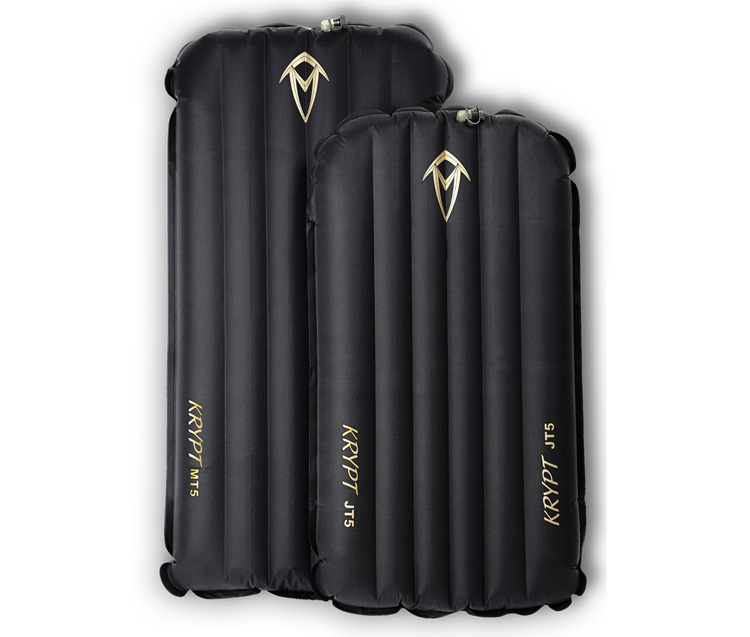
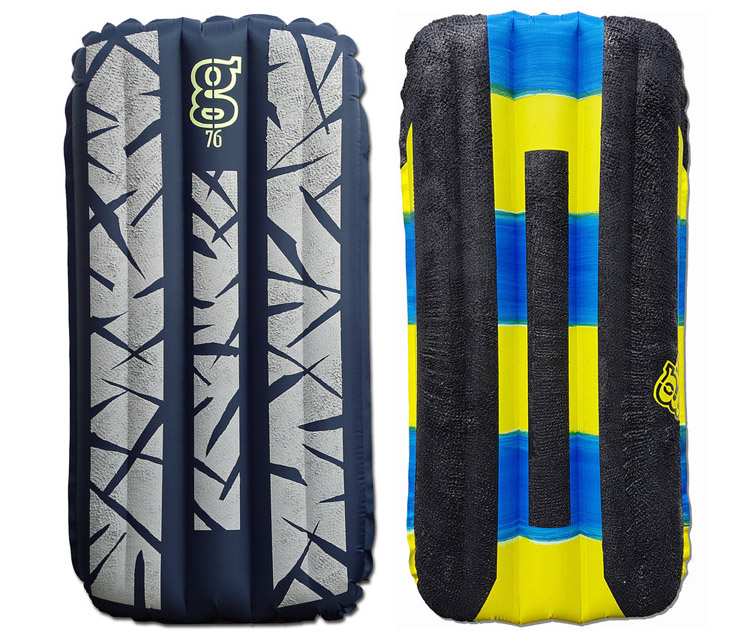
Mat Surfing 101
How do you ride a surf mat? This is the right way to do it:
- Inflate the surf mat at between 50 and 60 percent;
- Make sure you can bend the mat between 90 and 45 degrees;
- Put on a pair of bodysurfing fins;
- Paddle out using your arms and legs together;
- To duck dive, pull your elbows, squeeze the rails near the top corners, and punch through the water head first;
- To catch a wave, move your body backward, keep your head down, extend your hands on both sides of the mat, and kick with your legs and fins;
- As soon as you take off, rapidly move your body forward, bend your knees, and place your chin on the front of the mat;
- While riding the wave, don't grab the rails of the mat - place your hands flat over the gear or simply throw your hands back like a cannonball;
- Use your hips and fins to turn the mat;
- As you evolve, you may try to squeeze the top corners of the mat to perform hard turns and advanced tricks;
If you're having trouble paddling out or catching the wave, try riding a completely inflated surf mat.
As soon as you master the basics, you're ready to perform cutbacks and floaters, attack the lip, and get barreled like any other wave rider.
For more information on mat surfing techniques, communities, and construction methods, visit the most active forums at UK Mat Surfers (ukmatsurfers.com), Surfmatters (surfmatters.blogspot.com), and Tales from the Krypt (surf-mat.blogspot.com).
Welcome to the magical world of surf mats, and enjoy one of the purest forms of surfing.
